Step by Step tying of a Cascade Salmon Fly
by John Gray
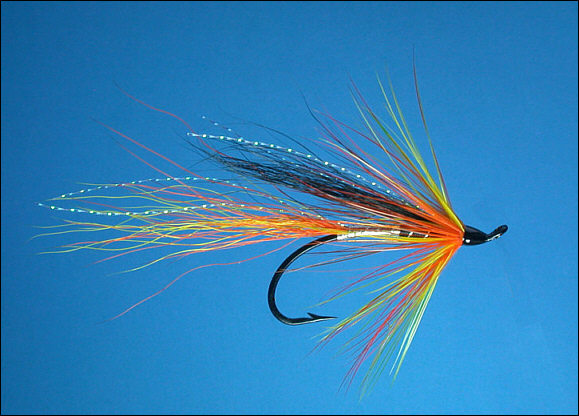
The Cascade Salmon Fly
Following the remarkable success of his Ally's Shrimp, one of the
most successful salmon flies of all time, Ally Gowans went on to
create yet another classic in the Cascade. Indeed, in the space of
little more than a decade, the Cascade has established itself as
probably the most used of all salmon flies, certainly here in the
UK, rivalling even Ally's Shrimp in popularity. Dressed in
appropriate sizes and weights, the Cascade may be fished effectively
throughout the season.
Tying a Cascade Salmon Fly Single
Materials
hook:
single, double, treble or tube
tail:
hot orange & yellow bucktail with clear Krystal hair.
body:
half silver and half black floss silk with medium oval tinsel rib.
wing:
silver Krystal Hair and black squirrel.
collar hackles:
yellow & hot orange.
head:
black thread and varnish
Step 1
- Wind a bed of thread towards the tail and tie in a few turns of
oval silver tinsel
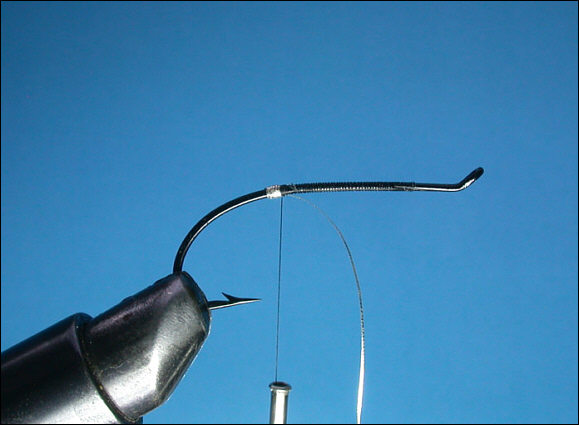
Step 2
- Tie in a tail of mixed yellow and orange bucktail plus a few
strands of Krystal Flash; wind an even bed of thread midway up the
body
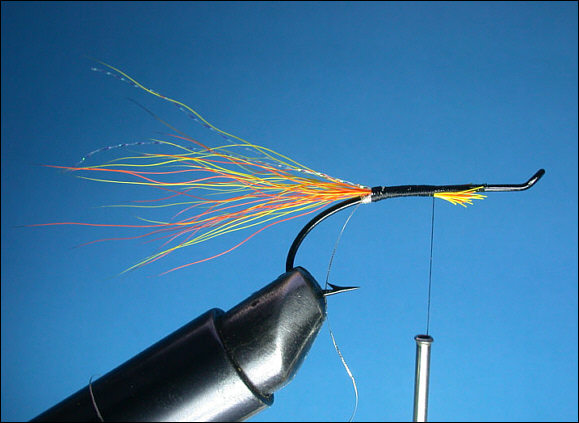
Step 3
- tie in silver tinsel, wind to tail and back, add black thread or
floss to form front half of body. Overwind with oval silver tinsel.
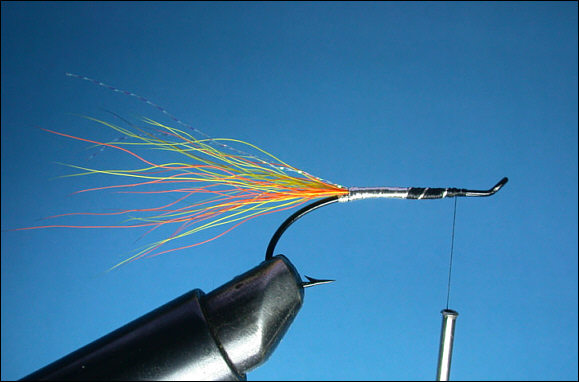
Step 4 - Add a wing of
black squirrel tail and a few strands of Krystal Flash
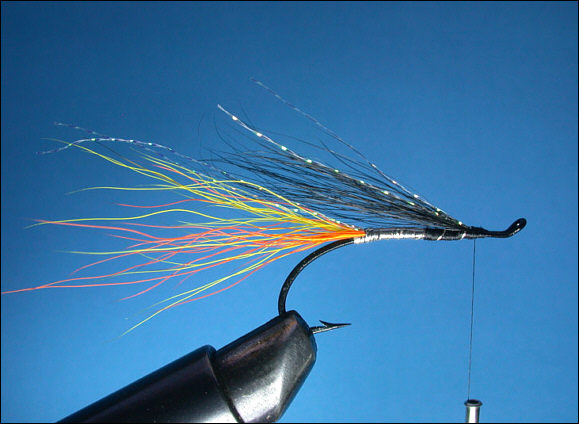
Step 5 - Wind two or
three turns of yellow cock hackle, followed by two or three turns of
orange cock hackle; form a neat head and varnish with two or three
coats of Cellire No. 1

The Cascade Salmon Fly may be dressed on
singles, doubles, trebles or tubes.
Cascade Double
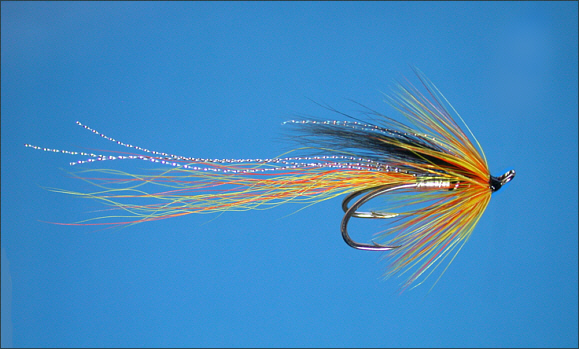
Ally Gowans himself produced the
first variant, by substituting gold for silver on the rear half of
the body. Since then, the Cascade has spawned numerous variants, the
Ness C for example, in which purple replaces the black in the body,
and the Park Shrimp, which adds jungle cock cheeks.
The Cascade can also be dressed
most effectively on the multitude of tubes now available to the
salmon fly tyer. The pattern lends itself to a bit of minor
tinkering here and there. For example, squirrel tail or Arctic fox
may be substituted for the original bucktail. A minor change of just
one colour, in the tail or hackle mix or in the wing, can alter the
appearance of the fly dramatically, as in the examples below, yet
the origin of the resultant variant is undeniable.
The Cascade Tube Fly
- a simplified Cascade, omitting the body dressing
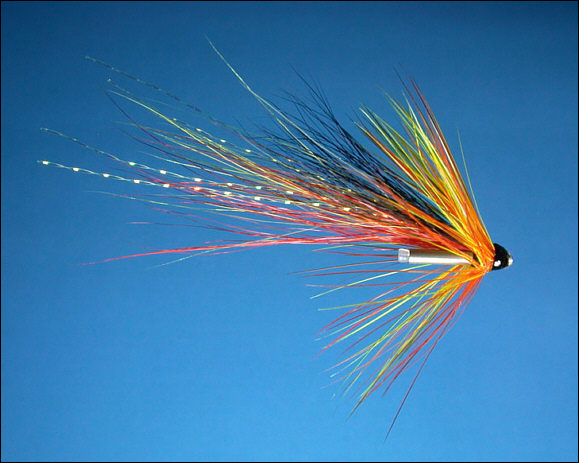
The Highland Cascade substituting green for
the orange in the tail
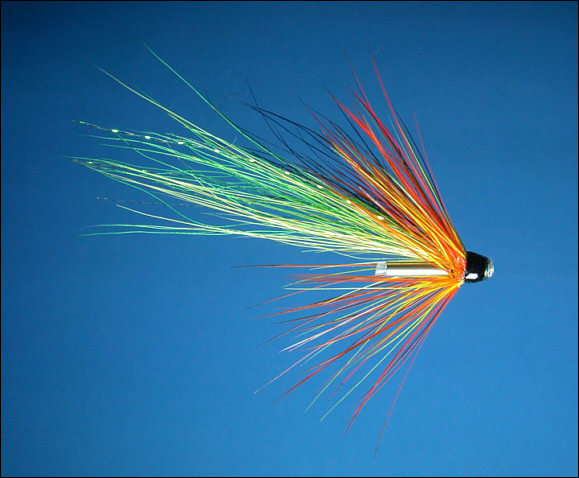
The Fiery Cascade substituting red for the black in the wing
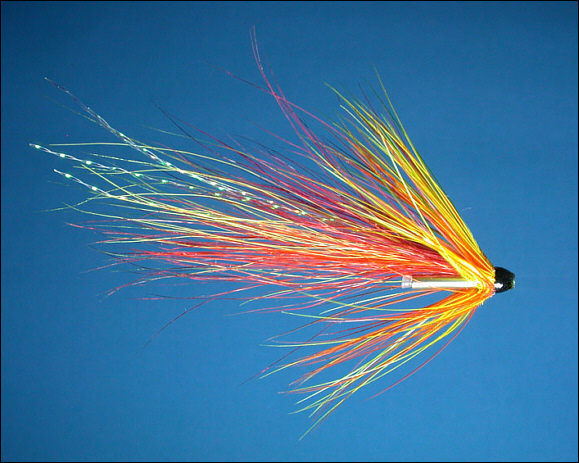
For more information on Grays Needle Tubes, see
Trout
and Salmon Flies |